Back pain, muscle tension, chronic inflammation, stress, nervous fatigue. Modern medicine seeks increasingly effective and personalized solutions, and it is no coincidence that many people are rediscovering traditional practices such as cupping, a treatment that is as ancient as it is surprisingly topical.
Millennial origins, modern utilities
Cupping (English: cupping therapy) is a therapeutic technique belonging to traditional Chinese medicine that has been used for more than 2,000 years. It was also known in Egyptian, Greek and Arabic medicine.
The principle is simple but powerful: applying cups (made of glass, silicone, or bamboo) to the skin generates a suction cup effect that draws blood to the surface, stimulates microcirculation, and releases deep-seated tension.
How does it work?
During a session, cups are placed on specific points on the body, often along energy meridians or contracted muscles. The therapist may use a variety of techniques:
- Hot cupping: a vacuum is created by briefly heating the inside of the cup.
- Cold cupping: a manual mechanism or pump is used to create suction.
- Dynamic cupping: the cups are glided gently, like a deep massage.
The negative pressure that is created favors:
- The opening of the pores,
- The mobilization of stagnant fluids,
- The removal of toxins in deep tissues.
What does the science say?
In recent years, cupping has attracted the attention of researchers and sports physicians. Several studies published in accredited journals confirm its effectiveness in musculoskeletal, inflammatory and stress conditions.
✅ Some evidence:
- Pain reduction in patients with chronic low back pain and fibromyalgia
- Improved joint mobility and muscle recovery in athletes
- Lowering inflammatory markers and improving lymphatic circulation
In 2016, the red marks left by cupping made headlines when Michael Phelps, the multiple Olympic champion, showed the results of the treatment on his muscles. Since then, the therapy has also become mainstream in professional sports.
What is it for?
Cupping is used in multiple settings, often as a complementary therapy:
| Directions | Expected benefits |
| Muscle and joint pain | Decontracture, relaxation, improved circulation |
| Migraines, neck pain, neuralgia | Stimulation of nerve and energy flow |
| Chronic stress and anxiety | Sedative action on the nervous system |
| Fatigue, insomnia, energy decline | Improved lymphatic drainage and balance of internal systems |
| Digestive and respiratory disorders | Activation of meridians related to stomach, lungs, intestines |
In some integrated medicine protocols, cupping is also used in the adjuvant treatment of gynecological and metabolic disorders.
Is it painful?
No. The sensation may vary from person to person, but it is generally felt as deep pressure, similar to an intense massage. In some cases, red or purplish marks may remain that disappear within a few days: these are not bruises, but the result of local blood recall.
Contraindications and precautions
Like all therapies, cupping requires attention:
- Do not apply to varicose veins, open wounds or irritated skin.
- It is not recommended in pregnancy and in patients with coagulopathies.
- It is essential to go to qualified and certified practitioners who can properly assess the patient’s condition.
Conclusion: a bridge between tradition and innovation
Cupping is much more than an oriental or sports fad: it is a comprehensive, natural and powerful technique that works on the physical body but also on energy, psychosomatic and circulatory blockages.
Used alone or integrated into functional and holistic medicine pathways, it can promote lasting well-being, reduce symptoms, and improve quality of life.


